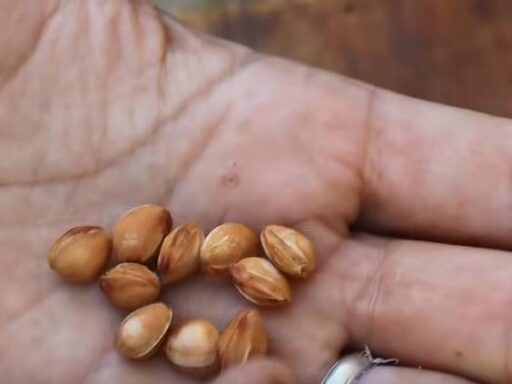Many people might wonder, “We’ve always planted in plastic pots, so what’s new?” Today, we’re introducing a brilliant idea that will change how you approach planting. By the end of this article, you’ll be amazed by the results this method can deliver. This innovative technique involves planting in fabric rather than plastic, offering several incredible benefits for your plants’ growth.
The Problem with Plastic Pots
Traditionally, plastic pots have been the go-to for planting. However, they come with significant drawbacks. Plastic pots tend to trap heat, which can harm the roots of your plants. On hot days, the soil inside these pots can become so hot that seeds might not even sprout, and in some cases, they could “boil” from the inside due to excessive heat. Moreover, plastic is less breathable, limiting the airflow needed for the plant roots, which can result in stunted growth or even plant death.
The Fabric Solution: A Game-Changer
Fabric planting offers a fresh and innovative approach. If you have some old fabric lying around, you can repurpose it to create fabric pots. No need for sewing machines; a few minutes of hand stitching will do the trick. Using fabric pots solves many of the problems associated with plastic ones, making it an ideal choice, especially if you’re short on traditional pots or live in an area where gardening supplies are hard to find.
Better Drainage and Aeration
One of the most significant advantages of fabric is its breathability. Unlike plastic, which often has only a few drainage holes, fabric allows for excellent water drainage throughout its surface. This feature ensures that the soil remains well-drained and prevents waterlogging, which can cause root rot. Additionally, the enhanced airflow helps the plant roots breathe, encouraging faster and healthier growth.
Keeping the Soil Cool
Another fantastic benefit of fabric pots is their ability to regulate soil temperature. Light-colored fabrics, for instance, reflect sunlight, keeping the soil cooler than it would be in a dark plastic pot. This prevents the overheating issue seen with plastic pots, ensuring that your plants’ roots remain in a more stable environment. You can even dampen the fabric to cool down the soil further, creating the perfect growing conditions.
Watering Made Easy

Watering can be a challenge with traditional plastic pots. If you overwater, excess water often stays trapped, leading to root rot. On the other hand, under-watering can lead to wilting. With fabric pots, these issues are greatly minimized. The fabric allows excess water to evaporate, while the plants can take up just the right amount of moisture from the soil.
An added benefit is that you can leave a small amount of water in a dish under the fabric pot. The plant will naturally absorb what it needs, and the rest will evaporate. This method is perfect for those who travel frequently or have a busy schedule, as it reduces the need for constant monitoring of water levels.
Encouraging Root Growth
In plastic pots, plant roots often grow in a circular pattern, becoming “root-bound” as they run out of space. This causes the roots to strangle themselves, limiting the plant’s growth. In fabric pots, however, the roots can easily grow through the breathable material, allowing them to expand naturally without becoming tangled. This not only encourages stronger root systems but also promotes healthier overall plant development.
Ease of Soil Manipulation
Fabric pots also offer the advantage of easy soil manipulation. If you want to aerate the soil or give the roots more space to grow, you can easily do so by gently shifting the fabric. This simple process is much harder to achieve in rigid plastic pots.
Conclusion
Switching from plastic pots to fabric planting is an innovative and effective way to improve plant growth and health. The benefits, including better drainage, improved aeration, more stable soil temperatures, and healthier root systems, make fabric pots a superior alternative. If you’re looking for a simple, affordable way to enhance your gardening experience, this method is definitely worth trying.






